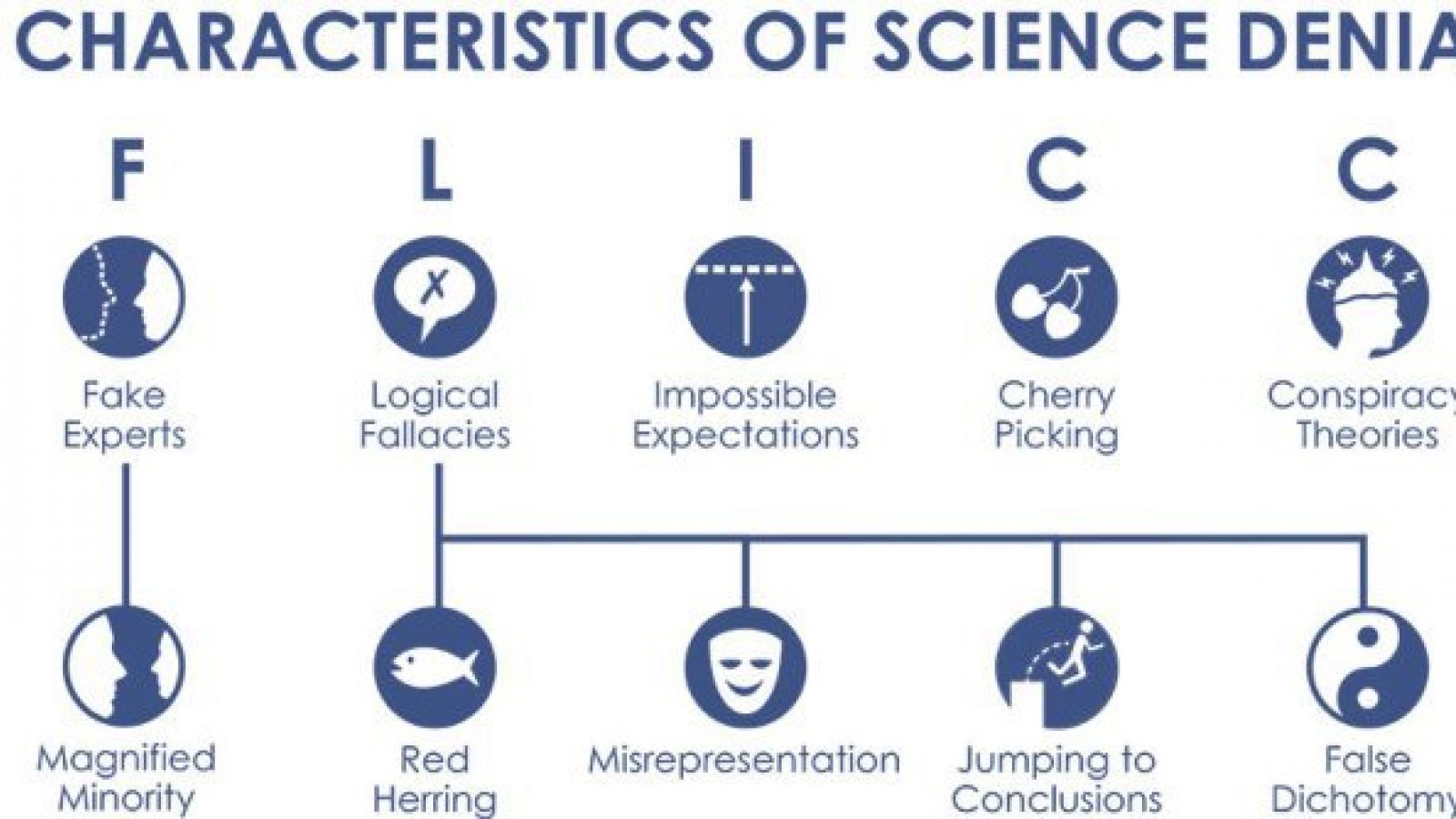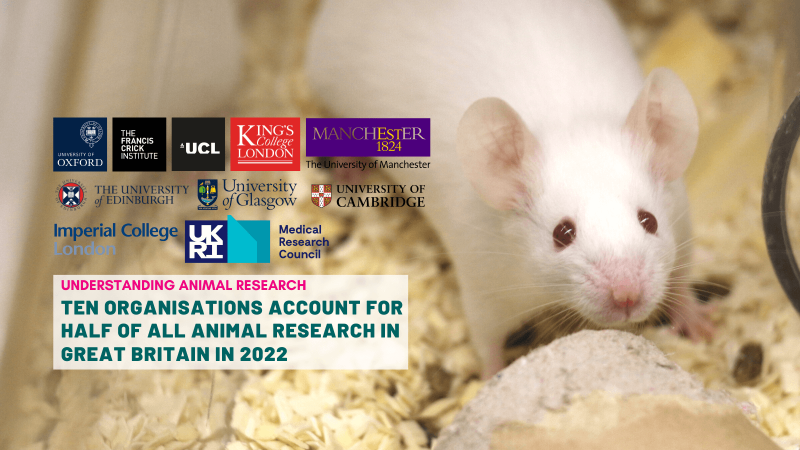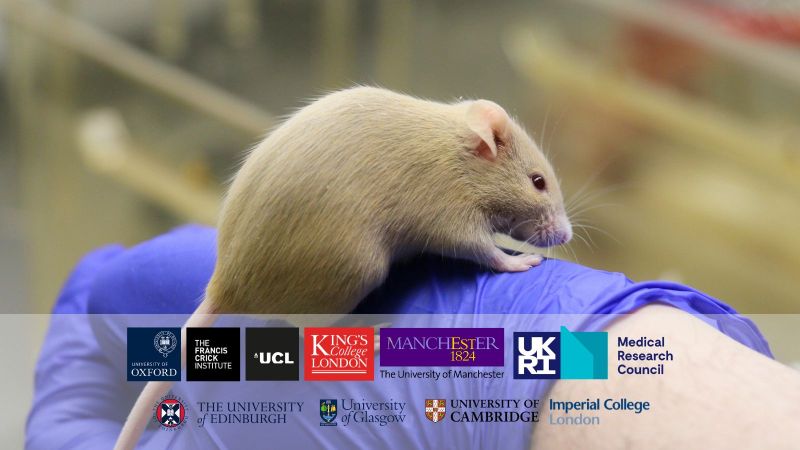
Postcards from the post-fact front line: Pseudoscience and non-sequiturs as a rationale against research
Over the years it’s become evident, from the letters to local newspapers and the claims of activists in the media, that there must be a fair few people who oppose animal research not for what it is, but for what they think it is: What they been told it is.
I’m excluding here the (1/3rd) of people who think the UK tests cosmetics on animals or whose understanding of the area extends only to smoking beagles, if only because they can’t have researched the topic much, so perhaps don’t feel that strongly about it. I’m more interested in the people who have researched it, but researched it badly and based their view on a narrative that’s rather wide of the mark.
Plenty of headlines have been made lately, during the Brexit campaign and Donald Trump’s successful bid for the White House that, wherever you stood on an issue, the ‘facts’ being bandied around weren’t perhaps facts at all. ‘Alternative facts’ has become a thing, as has the idea that we are now living in a ‘post-fact’ political environment. As those explaining animal research, we’ve been countering this phenomenon for a while.
What’s notable is, the arguments such people apply against research aren’t the ones you’d expect if someone had come to that same conclusion with a full knowledge of the facts, and moreover fall apart as a rationale once we interrogate them even a little.
Let’s take this common claim from PETA, for example, and hold it up to the light.
The ‘ol 92%
“No matter how many tests on animals are undertaken, someone will always be the first human to be tested on. Because animal tests are so unreliable, they make those human trials all the more risky. The Food and Drug Administration (FDA) has noted that 92 percent of all drugs that are shown to be safe and effective in animal tests fail in human trials because they don’t work or are dangerous. And of the small percentage of drugs approved for human use, half end up being relabelled because of side effects that were not identified in tests on animals.”
So, what’s wrong with this? Well, to start with it implies that all or most of animal research is the testing of pharmaceuticals and the like, which it of course isn’t. Only around 14% could be characterised in this way. It’s a small point, but when we agree to talk about ‘animal testing’ then we’re almost falling into a linguistic trap where we’re suddenly NOT describing 85% of what’s going on, which doesn’t make for much of an educational overview and tees up the conversation to head down the esoteric cul de sac of ‘animals as predictors of human reactions’.
Second is the claim that clinical trials are made more risky by the inclusion of an animal stage. Well, the problem with that is it ignores the fact that the preclinical stage includes, as well as animals, every other relevant way of assessing a drug’s safety, which might include cell cultures, computer programs and all the other animal alternatives. So, without the animal stage, we’d have the same battery of tests we currently have, just one less, and one which happens to be rather good at gauging the probability that a drug will be acutely harmful in clinical trials.
So what about this 92% statistic? Well, that’s been mythbusted before, but the take away is twofold. Firstly, the ‘92% failure to translate rate’ refers to all preclinical testing methods, so animals, computers – everything that isn’t a human, so we’re not increasing the safety of clinical trial volunteers by removing the animal test. The second is that preclinical tests are for safety, not efficacy, so a drug that passes them might later be found to be useless or have ‘side-effects’. The preclinical tests are looking potentially dangerous toxicity. This is why the FDA did not say that 92% of drugs that pass animal tests fail in human trials. Instead, in 2006, one of its employees referred to ‘laboratory and animal tests’ (which means mainly not animal tests) in this statement. There are furthermore lots of reasons a drug might not make it to market once shown to be safe, including marketing, timing and regulations as well as efficacy. For reference, 86% of drugs that pass human trials also fail to make it to market for the same reasons. This does not make humans rotten test subjects for human medicines.
An important corollary to this, which appears elsewhere in the PETA link is the incorrect implication that animal tests increase or fail to prevent serious incidents in clinical trials (also mythbusted here). The case PETA cites as a typical throwaway example, the illness cause by TGN1412, was actually the only major incident in more than 30 years and an extremely rare once-in-a-lifetime event. Given that more than 600,000 people are involved in clinical trials in the UK each year, this points to a system that is working startlingly well. It also appears to be the case that TGN1412 was infused into the human subjects up to 40 times faster than it was given to the animals in pre-clinical tests, which may explain why the results were so different.
Another important side note about ‘side effects’ is that they tend to be known - they’re the scary warnings that come with your medication. The most common side effect is gastric bleeding, and the most common culprit is aspirin, ironically a drug which wasn’t tested on animals before becoming a mainstream medicine.
Any way you look at these claims, then, or indeed this entire rationale, none of it turns out to be true.
(Could we also just note that the correlation between animal and human reactions to drugs is also really high? As we see here it’s north of 90% of the time per individual species, which rises once you combine species data, which is perfectly in line with the low number of serious incidents you see in clinical trials.)
Greek Myths
Next up, we have a variation on the theme of drug testing inefficacy in the form of the work of pseudoscientist Dr Ray Greek.
Now, this isn’t our first look at his deceptive methods. His argument has been debunked repeatedly here and here, and debated here and shrugged off by the European Commission here. But he gets an honourable mention because his approach has fooled an unusually wide section of the general public, along with TV stars and, most worryingly, MPs.
In short (and you can read in depth via the links above), Greek’s work is an absolute masterclass in rhetorical tricks in which he ticks off all 5 of the characteristics of science denial.

Figure: The five characteristics of science denial. Skeptical Science, CC BY-ND
He builds a case of sorts using, amongst other things, papers which are painfully obviously cherry picked (not to mention decades old), logical fallacies like straw man arguments (in this example, Dr Greek is critiquing a researcher describing their translational research by quoting, correctly yet irrelevantly, that most research is basic research) and conspiracy theories about researchers using animals because of ‘money’ (that’s right, researchers apparently use the most expensive and inconvenient means of conducting research because they make more money somehow).
Particularly clever is the way Dr Greek would like to make any discussion about animal research about animals’ ability to ‘predict’ human responses to things like pharmaceuticals – one of several technical terms he redefines in his book to create a linguistic mantrap for anyone trying to debate him. In this case, no matter that prediction is more the realm of horoscopes, you can find the word bandied around as a loose term through the scientific literature, so all Dr Greek has to do is redefine ‘prediction’ as a form of precise precognition, not a probabilistic value, pretend it’s the enterprise of much animal research, then prove that nobody can ever predict anything.
A side-effect of this is it pushes the debate around animal research onto territory where Dr Greek thinks he can ‘win’. Most animal research has nothing to do with predicting anything, nor indeed testing anything and Dr Greek even asserts that himself in his book on this topic.
“This book is not intended to be a criticism of the use of animals in the context of basic biological research. There can be no doubt that careful studies of animals have prompted important hypotheses about basic biological principles and there can be no doubt that studies of animals have contributed greatly to a scientific understanding of life and there is little doubt that these studies will continue to illuminate these matters in the future.” Animal Models in the Light of Evolution, page 30.
However, it’s not all good news for fans of Dr Greek, because this qualification also protects areas of research where prediction isn’t the endeavour, which is most of it, from his criticism. Various branches of neuroscience using monkeys? Not trying to predict anything. Breeding GM mice (which is more than 50% of experiments)? Not trying to predict anything. Animal research is overwhelmingly basic research, or the research of discovery and therefore, accidentally, perfectly fine by Dr Greek.
Ultimately, where Dr Greek fails, even within the narrow confines of ‘animals as predictors’, we have drugs and treatments and surgical techniques which work for more than one human and between species. With insulin, for instance, it is indeed impossible to tell precisely how the drug will interact with the physiology of a test subject of any species. Its efficacy will also be affected by the weather, the mood of the subject, the site of the injection, the density of fat it was injected into and a million other things. The complexity theory that Dr Greek relies upon to ‘prove’ that predictions of any kind are basically impossible sets the bar unnecessarily and unreasonably high.
It would be like asking a fireman if they knew exactly where each drop of water would land when dousing a burning building. Proving, rightly, that they couldn’t know, doesn’t render the fireman ineffective at putting out the fire.
Nobody’s making the claim that they know, or could know with that degree of precision, what will happen when a compound is introduced to a person’s unique biology (one of the ‘impossible expectations’ of science denial). That is not the degree of precision required or expected by science or medicine. Diabetics are alive because insulin lowers blood sugar. This happens in humans and non-humans equally and the structure of insulin is so similar across some species you can use one species’ insulin in another to identical effect. That’s as far as the claim goes.
Not for profit?
So, to recap, we know that the rationale for opposing animal research that “animals don’t predict human reactions to drugs because they’re different and that causes adverse reactions” doesn’t hang together at all. That’s not what animal research is, it’s factually inaccurate even on its own terms and the evidence given for it amounts to various forms of transparent misrepresentation.
It would be remiss of me, however, to ignore the huge feather in the cap of this phony narrative – the one charge that gets used to paint over the cracks of any listing conspiracy theory: that it’s All About The Money. This too is an obvious fraud when we compare it directly to reality.
Let’s start with who does animal research. In the main, it’s the public sector, not commercial interests. This table is from the annual statistics available on the Home Office website (last tab).
|
Experimenters |
Total procedures |
|
Universities, medical schools |
1,977,928 |
|
Commercial organisations |
1,039,632 |
|
Non-profit-making organisations |
515,472 |
|
Other public bodies |
490,126 |
|
Government departments |
81,771 |
|
NHS hospitals |
28,336 |
|
Public health laboratories |
9,366 |
As we can see from this, commercial organisations undertake a quarter of experiments. They indeed turn a profit and exist to attempt to make those profits. The companies will overwhelmingly be working in the fields of toxicity testing – mainly pharmaceuticals with some medical devices and the like. Yet, they will be more than happy to use any non-animal method which is as good and is allowed by the regulator. After all, the animals used in scientific research are expensive. By law they must be specially-bred: each mouse costs around £20 and each dog would cost more than £1,500. Then there are the costs of housing, feeding, and the animal care staff who look after the animals in our laboratories.
A non-animal model for testing pharmaceuticals would be preferable for industry if it were cheaper, as effective and less controversial, so the profit motive as far as it exists is incentivised the other way from animal use.
Elsewhere, individual scientists, perhaps working for universities, may vie for grants from bodies like the MRC or charities, but they do not get special consideration for using an animal over a no-animal model – the funders want medical progress wherever it comes from.
In fact, the entities which profit from animals being used over non-animal means are mainly those supplying the animals, or maybe those who provide cages and food hoppers, who aren’t linked to the researchers who get the grants.
Finally, the related charge that researchers justify using animals simply because they’re invested in an animal model executes a perfect face-plant at the point people realise that studies usually use animal and non-animal methods alongside one another. I might cite the work of Oxford University’s Matthew Rushworth, who uses primate models, and rat models, and human models and any other model he thinks might reasonably advance scientific research. How then does that stack up against Ray Greek’s assertion that “If you’re a scientist who uses non-human primates, you lobby for non-human primates in research. But if you make your living studying diseases of the nervous system in rats, well you say the same thing…only about rats.” Well, quite. It doesn't.
if this sounds familiar, it's because you've heard identical, and identically baseless, attacks leveled at climate scientists, evolutionists and even physicists.
As with most conspiracy theories or attempts to mislead, the narratives on offer from some activists only seem to make sense if you don’t have much factual knowledge of the topic under discussion. How else could an ‘alternative fact’ seem plausible? The fact is, animal science is right there in the scientific literature. Tens of thousands of papers. Decades of detailed work. Laws banning animal use if there’s an alternative. Information on every licence granted for animal experimentation published online. Charlatans exploit the fact people don’t know it’s even there, let alone what it says.
It’s cynical, for sure, but wouldn’t work without individuals being willing to be misled, for whom there will be, unfortunately, no shortage of individuals willing to exploit them.
Last edited: 5 April 2022 12:25



